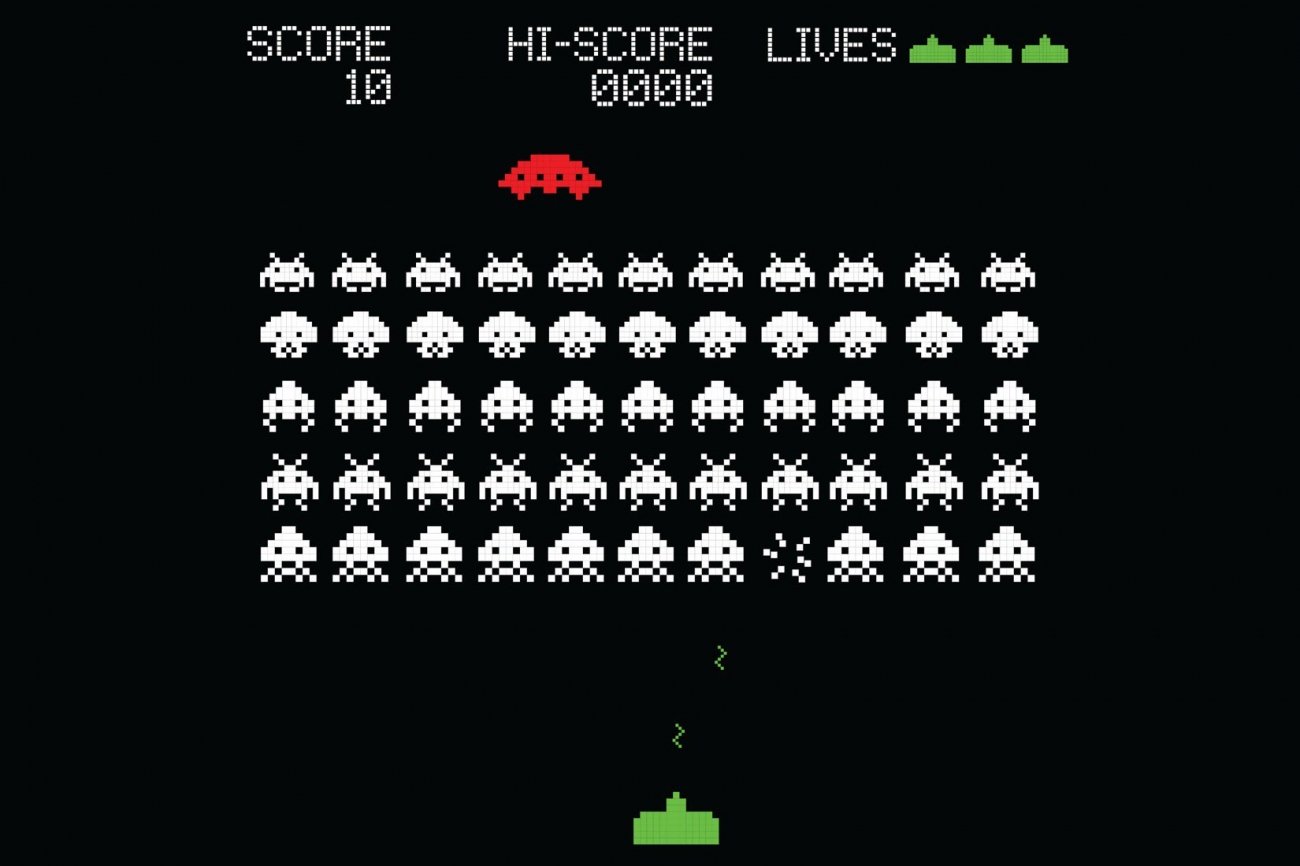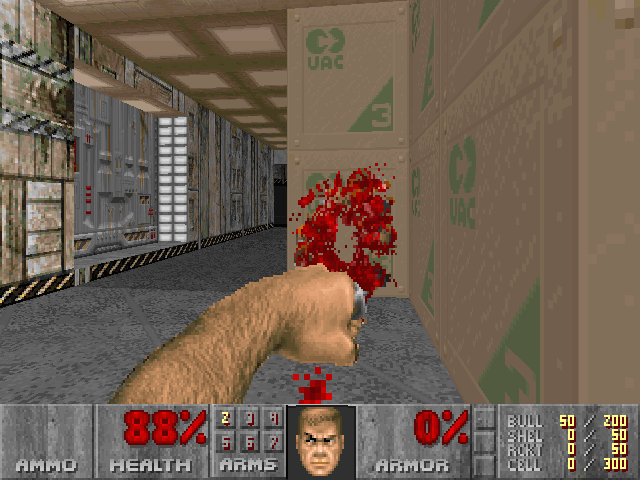93
The experiment in virtual acrophobia constituted a mini drama for each subject. Each run for each subject was like a narrative film shot entirely in the first person: there was only one character and usually a happy ending, in which the main character overcame her fear by confronting it. The same narrative can be found in Hitchcock's Vertigo.
The experiment in virtual acrophobia constituted a mini drama for each subject. Each run for each subject was like a narrative film shot entirely in the first person: there was only one character and usually a happy ending, in which the main character overcame her fear by confronting it. The same narrative can be found in Hitchcock's Vertigo.
In the same way, players of action-style games are called on to conduct an ongoing surveillance. They are assigned explicitly or implicitly the role of security guards, whose simple task is to shoot anything that appears threatening. Because the ultimate threat is that the enemy will destroy the equilibrium of the system and eventually halt the game by destroying the player himself, the player must constantly scan the visual field and direct his fire appropriately. Ideologically, the player is asked to defend or reestablish the status quo, so that even though the violence of the games appears to be antisocial, the ultimate message is not. It is a message that has prevailed from the early games such as Space lnvaders in the 1970s to such games as Doom and Quake in the 1990s (fig. 4.3). For decades, action games have played out the most aggressive form of televisual monitoring.
In the same way, players of action-style games are called on to conduct an ongoing surveillance. They are assigned explicitly or implicitly the role of security guards, whose simple task is to shoot anything that appears threatening. Because the ultimate threat is that the enemy will destroy the equilibrium of the system and eventually halt the game by destroying the player himself, the player must constantly scan the visual field and direct his fire appropriately. Ideologically, the player is asked to defend or reestablish the status quo, so that even though the violence of the games appears to be antisocial, the ultimate message is not. It is a message that has prevailed from the early games such as Space lnvaders in the 1970s to such games as Doom and Quake in the 1990s (fig. 4.3). For decades, action games have played out the most aggressive form of televisual monitoring.
 Source type: picture
Source type: pictureInfo: is an arcade game created by Tomohiro Nishikado and released in 1978.
Original size: 1300x866 px. Edit
In the same way, players of action-style games are called on to conduct an ongoing surveillance. They are assigned explicitly or implicitly the role of security guards, whose simple task is to shoot anything that appears threatening. Because the ultimate threat is that the enemy will destroy the equilibrium of the system and eventually halt the game by destroying the player himself, the player must constantly scan the visual field and direct his fire appropriately. Ideologically, the player is asked to defend or reestablish the status quo, so that even though the violence of the games appears to be antisocial, the ultimate message is not. It is a message that has prevailed from the early games such as Space lnvaders in the 1970s to such games as Doom and Quake in the 1990s (fig. 4.3). For decades, action games have played out the most aggressive form of televisual monitoring.
In the same way, players of action-style games are called on to conduct an ongoing surveillance. They are assigned explicitly or implicitly the role of security guards, whose simple task is to shoot anything that appears threatening. Because the ultimate threat is that the enemy will destroy the equilibrium of the system and eventually halt the game by destroying the player himself, the player must constantly scan the visual field and direct his fire appropriately. Ideologically, the player is asked to defend or reestablish the status quo, so that even though the violence of the games appears to be antisocial, the ultimate message is not. It is a message that has prevailed from the early games such as Space lnvaders in the 1970s to such games as Doom and Quake in the 1990s (fig. 4.3). For decades, action games have played out the most aggressive form of televisual monitoring.
In the same way, players of action-style games are called on to conduct an ongoing surveillance. They are assigned explicitly or implicitly the role of security guards, whose simple task is to shoot anything that appears threatening. Because the ultimate threat is that the enemy will destroy the equilibrium of the system and eventually halt the game by destroying the player himself, the player must constantly scan the visual field and direct his fire appropriately. Ideologically, the player is asked to defend or reestablish the status quo, so that even though the violence of the games appears to be antisocial, the ultimate message is not. It is a message that has prevailed from the early games such as Space lnvaders in the 1970s to such games as Doom and Quake in the 1990s (fig. 4.3). For decades, action games have played out the most aggressive form of televisual monitoring.
In the same way, players of action-style games are called on to conduct an ongoing surveillance. They are assigned explicitly or implicitly the role of security guards, whose simple task is to shoot anything that appears threatening. Because the ultimate threat is that the enemy will destroy the equilibrium of the system and eventually halt the game by destroying the player himself, the player must constantly scan the visual field and direct his fire appropriately. Ideologically, the player is asked to defend or reestablish the status quo, so that even though the violence of the games appears to be antisocial, the ultimate message is not. It is a message that has prevailed from the early games such as Space lnvaders in the 1970s to such games as Doom and Quake in the 1990s (fig. 4.3). For decades, action games have played out the most aggressive form of televisual monitoring.
 Log-in
Log-in Source type: picture
Source type: picture Source type: picture
Source type: picture